3 Ways to Start Seedlings Indoors
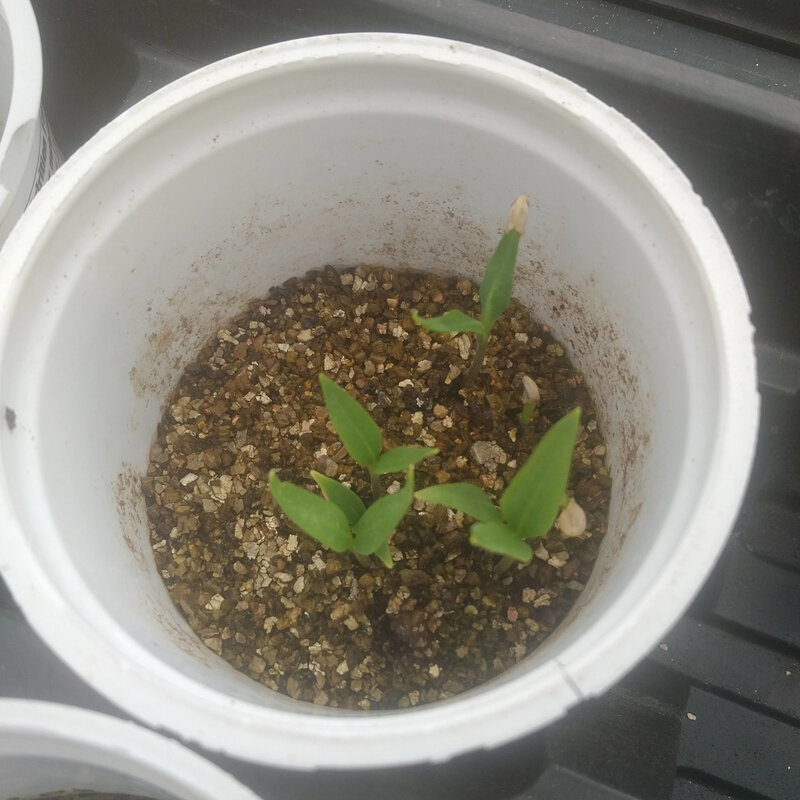
Bob Wildfong
Seeds in Cells of Potting Mix
Before plastic cell trays were invented, it was common to plant seeds in plain trays of soil, usually in a grid a few inches apart. The seedlings' roots would spread through the soil and intertwine with each other, so when it came time to transplant, the seedlings would literally have to be cut apart. The reason for growing seedlings in individual cells is to prevent the roots from tangling with their neighbours, so there's less damage during transplanting.
You should always use a potting mix that has lots of soft, spongey material, not just garden soil. Garden soil works outdoors, but it compacts into little bricks in cell trays. I find that all potting mixes are about the same for seedlings, especially since they only have to grow in it for a month or two before moving on to better times in the garden.
Pros: If you plant one or two seeds per cell, and pull out any duplicates, there's just one step to do.
Cons: If the seeds don't all sprout, you have to go back and re-sow. If you plant too many seeds (easy to do if they're tiny) it's really hard to thin the seedlings down to one per cell.
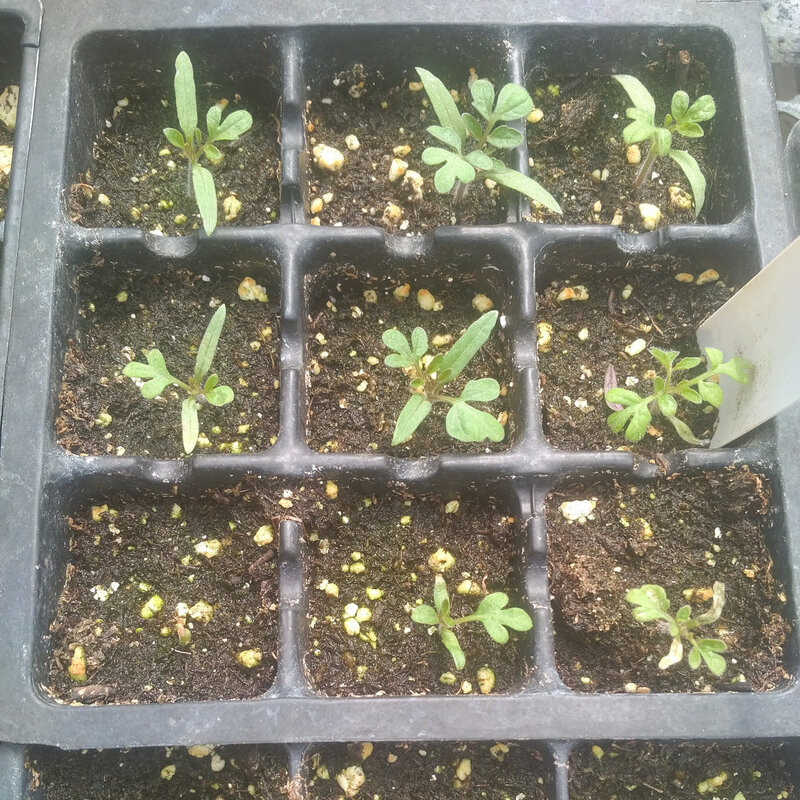
Tomato seeds are easy to plant 1/cell and reliable enough to fill the cells as expected. There's just one empty space here. |

These Matthiola seeds didn't germinate reliably. Now I have to re-sow all the empty cells. |
Seeds in Vermiculite
I like to use vermiculite to start seeds with irregular germination, or very tiny seeds that are hard to sow one at a time. Vermiculite is a light, puffy material that you can use over and over just to germinate seeds, then transplant the sprouts into normal potting soil. Vermiculite holds water well when it's moist, but it breaks up easily when it's a little dry, so you can remove tiny seedlings without breaking the roots.
Pros: If you crowd tiny seeds too much, you can separate the tiny sprouts easily. If "difficult" seeds sprout over a long period of time, you can transplant the first sprouts without disrupting the seeds that will sprout later.
Cons: It's extra work, and takes extra space, so it isn't worthwhile unless a more straightforward method is frustrating.
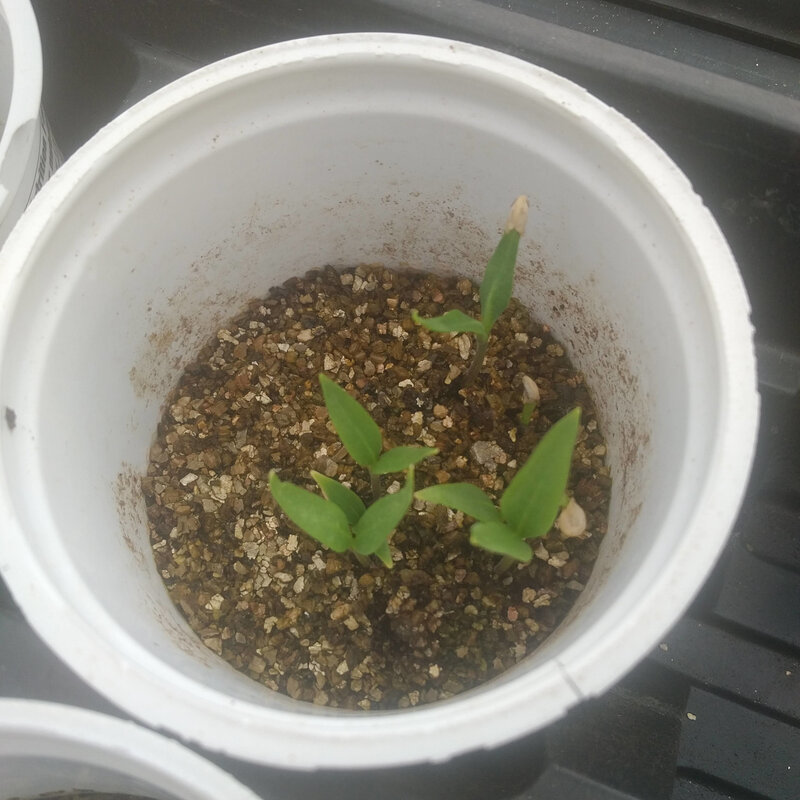
Unpredictable seeds like peppers can start in vermiculite. As they germinate, you can transplant them to cells. |
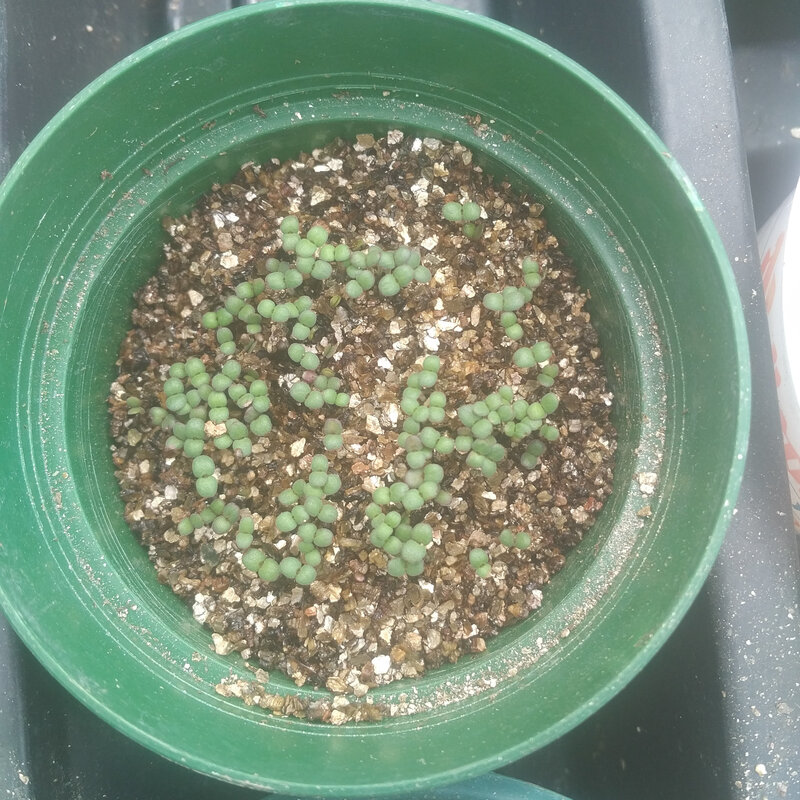
Tiny seeds can be crowded in this starting container, then individually moved to cells. |

A little stick or a pencil breaks up the vermiculite, allowing the whole root to be removed without damage. |
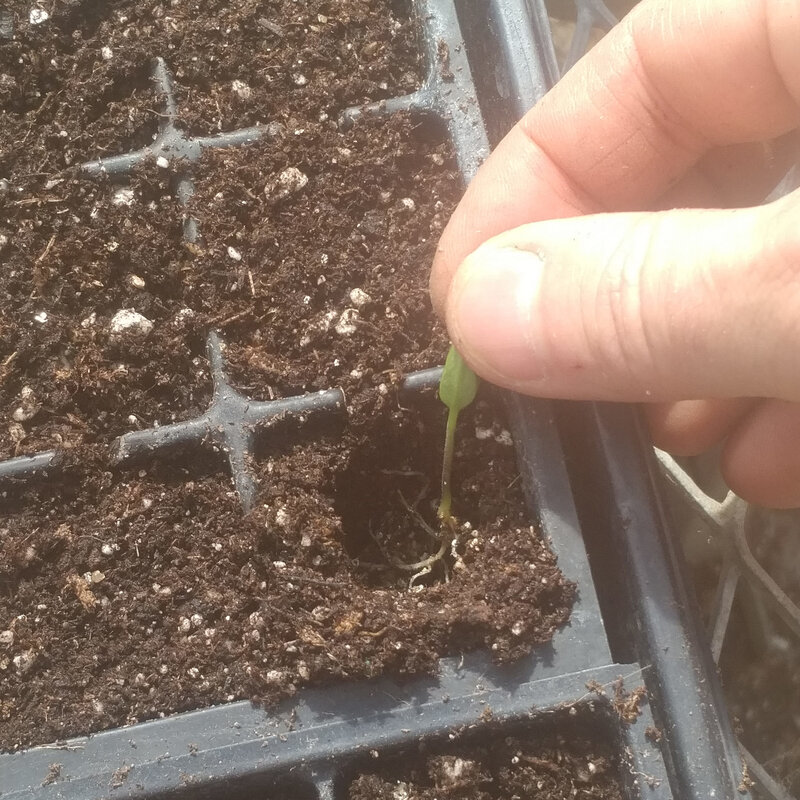
Tuck the seedling into a cell, and let it grow. |
Seeds Crowded Together
If the whole point of cell trays is to keep seedlings apart from each other, why would you intentionally crowd them together? It turns out that certain seedlings don't mind being crowded, so you can save a lot of space. Onions and leeks are perfect examples of seedlings with long, thin roots that simply don't tangle with each other.
Sow a pinch (about a dozen seeds) of onion seeds in each cell, and let the sprouts all grow up crowded together. When you transplant them to the garden, you'll discover that you can separate the seedlings very easily.
Pros: Saves lots of space indoors.
Cons: Only works with members of the onion family (and maybe some grasses?)
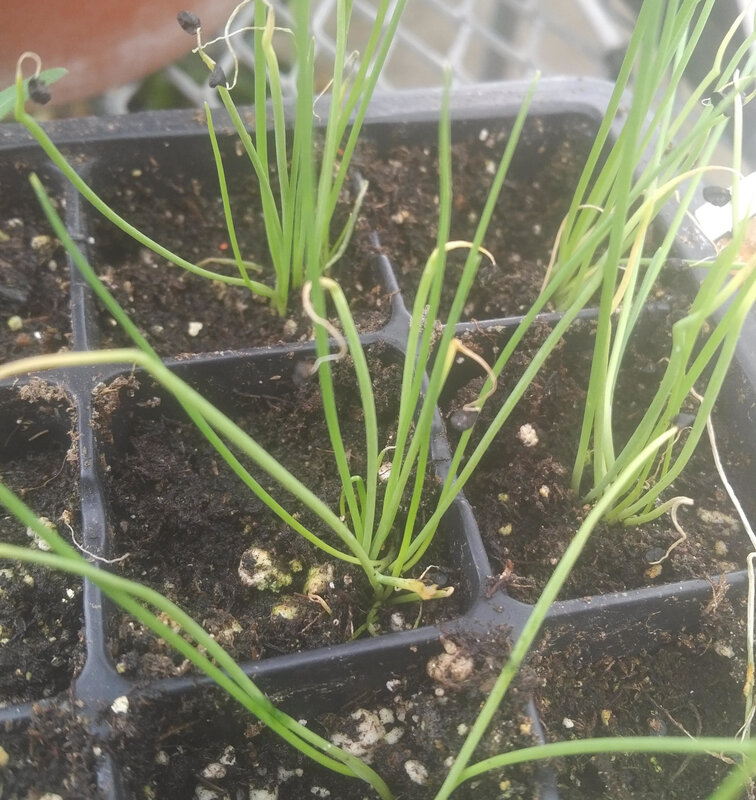 |
--
Not yet a member?
An annual membership to Seeds of Diversity gives you access to our seed exchange, seed grow-out programs, and our online news.

We depend on donations to do our work.

Thank you for your support!
